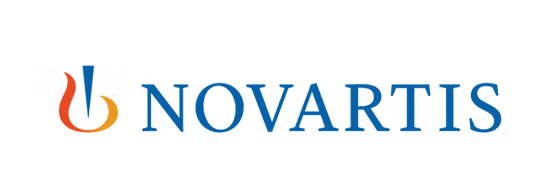
19 Aug 2025
Quality of hire is a key measure of how much value new employees bring to a company. For leaders responsible for hiring, showing the return on investment for recruitment is critical, and no metric is more important than understanding the actual impact of new hires.
Even though most companies see quality of hire as very important, only a small number feel confident in measuring it well. Companies that excel at measuring the quality of hire tend to perform much better overall compared to those using outdated hiring methods.
Why Measuring Quality of Hire Is Hard
Many companies struggle to measure the quality of hire because they rely on personal opinions instead of solid data. This "gut feeling" approach can lead to big mistakes in hiring. For example, some candidates excel in interviews but struggle to perform well on the job, much like a performer who initially impresses but later causes problems. This creates three common issues:
- The Quiet Achiever: Some employees do great work but are overlooked because they don't stand out in subjective reviews.
- The Interview Superstar: Some candidates excel at interviews but struggle with the actual job or team dynamics.
- The Cultural Misfit: Even skilled hires may not succeed if they don't align with the company's culture, leading to early exits or lower productivity.
These problems make it challenging for hiring teams to demonstrate their value and understand what contributes to a successful hire.
How to Build a Quality of Hire Measurement System
To measure quality of hire effectively, you need a clear plan that combines numbers and insights. Every job should have specific goals that can be measured, like money earned or saved. Without these, measuring quality of hire is nearly impossible and may not be helpful.
There's no single way to measure quality of hire, but here are some key areas to focus on:
Core Measurement Areas
Performance Metrics
Look at objective measures that tie directly to business results, such as:
- Productivity (output, efficiency, or goals met)
- Customer satisfaction scores
- Money made or saved
- How long does it take for a new hire to be fully productive
Retention Analysis
High turnover early on often points to hiring issues. Track retention at key points:
- 30 days (to check onboarding)
- 90 days (to assess job fit)
- 12 months (to measure long-term value)
Cultural Integration
See how well new hires fit into the company's culture by looking at:
- Team collaboration
- Feedback from coworkers
- Employee engagement survey results
- Patterns of internal job changes
Advanced Quality Indicators
Consider advanced measures like awards, patents, raises, or time to full productivity. A simple way to check quality is to ask: “Would we hire this person again if we had to?"
Impact Measurements
Look at things like:
- New ideas or process improvements
- Awards or recognition
- Promotions or career growth
- Mentoring or knowledge sharing
Business Value
Measure how hires affect:
- Revenue per employee
- Cost savings
- Customer satisfaction
- Team performance
Ways to Collect Data
To measure quality of hire well, companies need to move from guessing to using data. Using predictive tools can make hiring fairer for everyone. Here’s how to gather valuable data:
Pre-Hire and Post-Hire Framework
Split quality of hire into two parts:
- Pre-hire quality: Look at things like employee referrals, test scores, or interview results to predict success.
- Post-hire quality: Track absenteeism, time to productivity, and employee engagement to see the real impact of hires.
Satisfaction Surveys and Feedback
Use surveys tailored to specific roles:
- For customer-facing roles, utilize customer feedback, such as satisfaction scores.
- For technical roles, check peer reviews of work quality or innovation.
- For leadership roles, look at team engagement and retention.
360-Degree Feedback
Gather feedback from multiple sources using:
- Specific job-related skills
- Standard rating scales
- Regular reviews
Performance Connections
Link hiring decisions to business results. For example:
- Sales roles: Track sales numbers
- Service roles: Measure customer satisfaction
- Compare new hires to benchmarks, like how sports teams measure a player's value compared to an average replacement.
Offboarding Insights
When employees leave, ask about:
- Challenges they faced
- Cultural fit issues
- Training gaps
- Management problems
Steps to Implement Quality of Hire Measurement
To succeed, follow a phased plan:
Phase 1: Set a Baseline (Months 1-3)
Create a starting point for your company by:
- Reviewing existing performance data
- Defining success metrics for each role
- Setting up data collection processes
- Establishing clear timelines
Phase 2: Use Technology (Months 4-6)
Use technology to make measurement easier:
- Connect with hiring systems for smooth data flow
- Use predictive tools and real-time dashboards
- Automate reports. For example, one company used a single platform to improve hiring efficiency while maintaining high quality, helping them find talent from new regions.
Phase 3: Keep Improving (Ongoing)
Constantly refine your process by:
- Analyzing what education or skills lead to success
- Improving screening questions
- Strengthening hiring processes
- Linking hiring to retention
The Benefits of Measuring Quality of Hire
Good measurement leads to:
- Higher revenue per employee
- Lower turnover costs
- Better hiring efficiency
- More accurate decisions
For example, if replacing an employee costs a third of their salary, cutting turnover by 25% can save thousands per hire. For 100 hires, that could mean hundreds of thousands in savings.
Best Practices for Long-Term Success
- Set Goals Together: Collaborate with hiring managers to establish realistic, measurable targets that align with data and business needs.
- Align with Business Goals: Ensure that quality of hire metrics align with the company's broader objectives.
- Review Regularly: Check progress every few months and adjust as needed.
- Use Advanced Tools: Let technology uncover patterns while keeping human judgment for cultural fit and performance.
The Future of Quality of Hire
As technology like AI improves, measuring the quality of hire will become even more accurate. Companies that start building strong systems now will be ready to take advantage of these tools, making hiring fairer and more effective.
By focusing on data-driven hiring, companies can move from reactive decisions to strategic talent acquisition. This leads to better business results, lower costs, and stronger teams. When quality metrics focus on clear financial impacts, the value of measuring quality of hire is clear.











Comments (0)